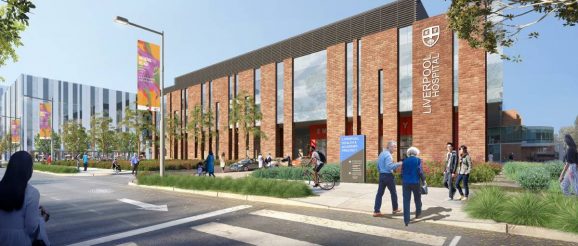Liverpool Innovation Precinct joins global network | Liverpool City Champion | Liverpool, NSW

Liverpool Innovation Precinct joins global network

Liverpool Innovation Precinct (LIP) chair David Borger said having the Liverpool Innovation Precinct as a founding partner of the Global Network of Innovation Districts has reaffirmed: “Liverpool is where it’s at for innovation”.
The LIP has joined the pioneering global collaboration to drive the creation of more smart jobs in health, education, research and innovation in south-west Sydney.
Other members of the Global Network include the Central Innovation District The Hague, Pittsburgh Innovation District, Oslo Science City, Be’er Sheva Innovation District and PMC Innovation District South Korea.
Established in 2017, the LIP is comprised of 10 partners to advance health, research investment and innovation in south-west Sydney. The current partners are South Western Sydney Local Health District, Ingham Institute for Applied Medical Research, UNSW Sydney, Western Sydney University, University of Wollongong, Liverpool City Council, South Western Sydney Primary Health Network, NSW Department of Education, TAFE NSW and Sydney Catholic Schools.
“The collaboration of the LIP members has put Liverpool at the forefront of solving some the world’s complex health issues, with research happening in Liverpool having a global impact,” said Mr Borger, who is the executive director of Business Western Sydney which is a founding member of the LIP.
“The LIP is fortunate to be among a select group of innovation districts to join this month’s launch of the Global Network. It’s not every day somewhere in South Western Sydney is given the opportunity to knowledge share putting the Liverpool Innovation Precinct in an enviable position.”
So how will it work?
Supported by a team of leading researchers and practitioners from the Global Institute on Innovation Districts, the Global Network will provide cutting edge analysis and host deep strategic sessions for the districts, enabling the Global Network to provide policy makers and investors with insights into the innovation district model. A part of their role will be to develop fact-based communications and insights designed to be impactful on, and influence, key stakeholders such as government and investors.
“Innovation districts are the 21st century model of innovation and problem solving. The new Global Network is an important route to optimising that model,” said Julie Wagner, president of The Global Institute on Innovation Districts, which has developed the Global Network.
The Global Institute found that at the height of the COVID-19 pandemic, at least 24 innovation districts were driving advanced research on vaccines and sophisticated medical devices to combat COVID-19.
